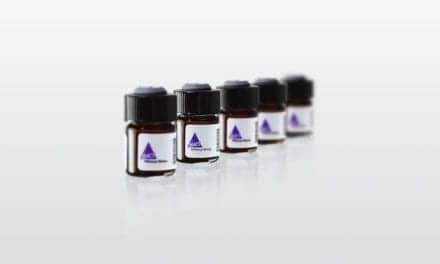In a time of uncertain reimbursement, clinical utility data are essential
By Stephanie Ibbotson
Over the past 3 years, the reimbursement landscape for molecular diagnostic tests has changed dramatically. In 2016, Palmetto GBA, the Medicare administrative contractor (MAC) for a number of states in the Southeast and Midwest, began to reassess its coverage policies and limit the use of tests without proven clinical utility.
A clear implication of Palmetto’s review process is the notion that a clinical laboratory test has value only if it guides the treatment of patients. Palmetto’s review determined that some molecular diagnostics didn’t have published studies sufficient to demonstrate such value in clinical practice, leading to restrictions on payment for those tests.1 As many payors follow Palmetto’s reimbursement decisions, coverage for some types of molecular diagnostics, such as syndromic panels, subsequently plummeted.
Palmetto’s changes have had substantial effects on clinical labs, patients, and molecular diagnostic manufacturers alike. For many clinical laboratories, molecular tests were once a profit center. Today, reimbursement rates may not even fully cover the cost of performing those tests. In turn, such changes have had significant effects on patients. In some cases the burden of the test cost has been transferred to the patient, while in other cases important tests may no longer be available because the reimbursement potential is so poor (see “Keeping the Patient Experience in Mind“).
Meanwhile, molecular diagnostic developers are scrambling to design and publish the clinical utility studies now required for positive coverage determinations. Such studies are expensive, and for tests affecting small populations it can be challenging to gather enough patients to generate meaningful data.
Despite the uncertain reimbursement landscape, new molecular diagnostic tests are being released at a dizzying pace. A 2018 report found that, on average, 14 new genetic tests come onto the market every day.2 At the time the report was released, more than 74,000 genetic tests were commercially available in the United States. Even a few years earlier, the rate of new tests being released was 10 per day, so reimbursement challenges have not stunted market growth.
Clearly, clinical laboratorians and other stakeholders will have to continue addressing the reimbursement issues facing such tests. There are a number of ways to protect against negative reimbursement trends, and many labs may find that working with molecular diagnostic developers—either to run clinical utility studies or simply to get guidance—can be helpful for taking advantage of opportunities to improve coverage.

Figure 1. Providing details about how a test positively affects care decisions can be crucial to a reimbursement decision or appeal. Here a lab technician processes a sample for the Luminex multiplexed nucleic acid xTAG gastrointestinal pathogen panel, which provides results for more than 90% of causative gastroenteritis agents in as little as 5 hours.
Payor Policy
The bad news for Medicare coverage of some molecular diagnostics has been coming ever since Palmetto first issued changes to local coverage determinations, with drastic reductions in coverage. Since then, the MAC has finalized many of its decisions. Palmetto also runs the molecular diagnostics services program known as MolDx, which establishes expectations for clinical utility and sets reimbursement rates. With so many Medicare contractors—and even some private insurers—following Palmetto’s guidance, the MolDx reimbursement reductions for some molecular diagnostics now affect about 51% of people eligible for Medicare benefits.3
On top of the reductions initiated by Palmetto, laboratorians must now also contend with ongoing reductions resulting from implementation of the Protecting Access to Medicare Act of 2014 (PAMA), which influences the reimbursement rates for a host of clinical lab services. Each year, PAMA identifies certain payment trends for Medicare, based on what private payors are paying. For many microbiology products, PAMA pricing is expected to lead to a 10% reduction in reimbursement rates annually for the next few years.4
The first round of PAMA reductions to the Medicare clinical laboratory fee schedule became effective in January 2018. But CMS’s current processes for implementing PAMA are expected to result in such significant harms to the clinical laboratory community that the American Clinical Laboratory Association is suing the US Department of Health and Human Services in an effort to halt and correct the agency’s implementation activities.5
Overall, changes to molecular diagnostic reimbursement have been particularly severe for syndromic tests. While targeted tests can be useful for certain patients in specific situations—otherwise healthy people with obvious respiratory symptoms during flu season, for example—syndromic testing is widely recognized within the clinical lab community as the better option for diagnosing high-risk patients (such as the elderly or immunocompromised) with nonspecific symptoms. Attempting to diagnose such patients through the serial use of targeted tests is far less likely to produce useful results in a clinically relevant time frame.
Today, reimbursement is strongest for well-established targeted tests with an abundance of clinical utility data in the literature. One-size-fits-all syndromic panels that cannot be customized are on a much weaker footing. Meanwhile, exome and whole-genome tests based on next-generation sequencing are seeing rapid shifts in reimbursement policy, as these much newer tests are adopted by more clinical laboratories.

Figure 2. As molecular diagnostics increasingly provide information that positively affects clinical practice and outcomes, the laboratory sector can expect more favorable payor decisions. Here, a lab technician loads a completed test into the Luminex Verigene reader to generate results.
What Labs Can Do
Despite the challenges confronting reimbursement for molecular diagnostics, there are several actions that clinical labs can take to improve their likelihood of obtaining coverage for such tests. Perhaps the most important activity comes in the form of clinical utility studies, which are essential to payors’ calculation of the medical necessity and reasonableness of a test.
In order to secure FDA clearance for an in vitro diagnostic, the manufacturer must demonstrate that the test meets accepted standards of analytical and clinical validity—the accuracy, reproducibility, and precision necessary to prove that the test’s results can be trusted. But clinical utility goes well beyond those criteria. It encompasses clinical validity—evidence that the diagnostic result is truly associated with the outcome of interest—as well as usefulness—a clear demonstration that using the test improves patient outcomes or influences clinical decisions about treatment.
Clinical utility studies—particularly those offering strong evidence for better health outcomes—provide an essential stepping stone toward securing high-value reimbursement coverage. However, conducting such studies is typically an expensive proposition and, since they are not required for FDA clearance, many molecular diagnostic manufacturers are reluctant to allocate the resources needed to carry out such studies.
For test developers, however, having a willing lab partner can be a strong motivator for taking on clinical utility studies. Such studies must be performed in clinical laboratories, but they are typically designed and funded by diagnostic manufacturers. Labs that regularly use a molecular test with poor reimbursement prospects and no published clinical utility studies may find it helpful to approach the test developer about conducting this kind of study.
Once published, the results of a clinical utility study can be advantageous not only to the lab that performed the study, but also to every other lab running that test. While such studies are intensive, they are not as daunting as the much broader studies required for health economic and outcomes research, which extend beyond the laboratory component alone to encompass clinical utility as well as the economics of the whole health intervention.
Aside from clinical utility studies, there are other ways that diagnostics manufacturers can help laboratories ease the burden of reimbursement challenges. Test developers often work directly with both guideline-setting organizations and payors, so they have a good deal of information to offer labs about how to optimize reimbursement approaches for their patient populations (see “Reimbursement Questions for Labs and Their Suppliers“).

Figure 3. Clinical labs running broad molecular tests—particularly syndromic tests such as those performed on the Verigene system by Luminex—have been hard hit by the changing reimbursement landscape. Here, a lab technician scans a sample in preparation for running tests on a Luminex Verigene Processor SP.
In addition, it’s increasingly important for labs to include reimbursement as a consideration when selecting a molecular diagnostic platform. For example, test platforms that permit labs to customize syndromic panels for the needs of each patient tend to be more coverage-friendly than platforms that require the full panel to be run regardless of the patient’s condition.
In the case of diagnostics for gastrointestinal infection, for instance, some syndromic panels include Clostridioides difficile, which in many cases is not recommended for testing. Positive C. difficile results for asymptomatic patients can lead to unnecessary and potentially damaging treatments. Having to include C. difficile as part of a syndromic test for every patient reduces the likelihood of getting reimbursement coverage, while being able to mask those results when they are not needed can improve the chances of a favorable reimbursement decision.
It’s also a good idea for laboratories to engage directly with payors. Labs are allowed to appeal a reimbursement decision about the specific use of a test (even for a specific patient) or, more broadly, to appeal a coverage determination affecting the general use of many tests. The success of such appeals typically relies on the lab submitting data about how it is using the tests, or even patient-specific data demonstrating why the test was important for care decisions and outcomes. If laboratorians are not sure how to begin this process, they can consult with the molecular diagnostic developer or a pertinent professional society.
Finally, labs can benefit from engaging with professional societies, which are often involved in advocacy programs to improve reimbursement coverage for various types of tests. Participating in these activities can help labs contribute to the discussion in a meaningful way.
Looking Ahead
While it is tempting to become pessimistic about the prospects for molecular diagnostics reimbursement, there are some glimmers of hope. Although PAMA has recommended coverage reductions for molecular diagnostics, for instance, it has also recommended positive coverage for exome sequencing within certain disease profiles. Such a decision suggests that there is potential for broader coverage, so long as the diagnostics involved can be directly tied to actionable clinical information.
As more clinical utility studies are published for molecular diagnostics, there will be mounting evidence that such tests are important not only for clinical decisionmaking but also for improving patient outcomes. When this happens, we can expect more favorable decisions from Palmetto and other payors. The key will be conducting the needed studies, and getting the results published in the literature, so that the study results can be included in coverage determination policies down the road.
Stephanie Ibbotson is director of market access and reimbursement affairs at Luminex. For further information, contact CLP chief editor Steve Halasey via [email protected].
References
- Local Coverage Determination (LCD): MolDX: Multiplex Nucleic Acid Amplified Tests for Respiratory Viral Panels (L37713) [online]. Columbia, SC: Palmetto GBA, MolDx, 2018. Available at: www.cms.gov/medicare-coverage-database/details/lcd-details.aspx?lcdid=37713&contrid=391&ver=4&contrver=1&cntrctrselected=381*1&cntrctr=381&s=34&doctype=allproposed&bc=aggaaaqbaaaa&. Accessed February 25, 2019.
- The Current Landscape of Genetic Testing: Market Growth, Reimbursement Trends, Challenges and Opportunities. 3rd ed [market report, online]. Franklin, Tenn: Concert Genetics, 2018. Available at: www.concertgenetics.com/resources/2018-current-landscape-genetic-testing. Accessed February 25, 2019.
- Molecular Diagnostic Program (MolDX): Coverage, Coding, and Pricing Standards and Requirements (M00106) [online]. Columbia, SC: Palmetto GBA, MolDX, 2018. Available at: https://med.noridianmedicare.com/documents/10546/2934526/molecular+diagnostic+program+%28moldx%29%20manual. Accessed February 14, 2019.
- Ray T. CMS 2018 PAMA pricing cut for lab tests deeper than prior estimate; advanced Dx lab tests fare well [online]. GenomeWeb. September 22, 2017. Available at: www.genomeweb.com/molecular-diagnostics/cms-2018-pama-pricing-cut-lab-tests-deeper-prior-estimate-advanced-dx-lab. Accessed February 14, 2019.
- CMS Ignored Congressional Intent in Implementing New Clinical Lab Payment System Under PAMA, ACLA Charges in Suit [press release, online]. Washington, DC: American Clinical Laboratory Association, 2017. Available at: www.acla.com/cms-ignored-congressional-intent-in-implementing-new-clinical-lab-payment-system-under-pama-acla-charges-in-suit. Accessed February 14, 2019.






